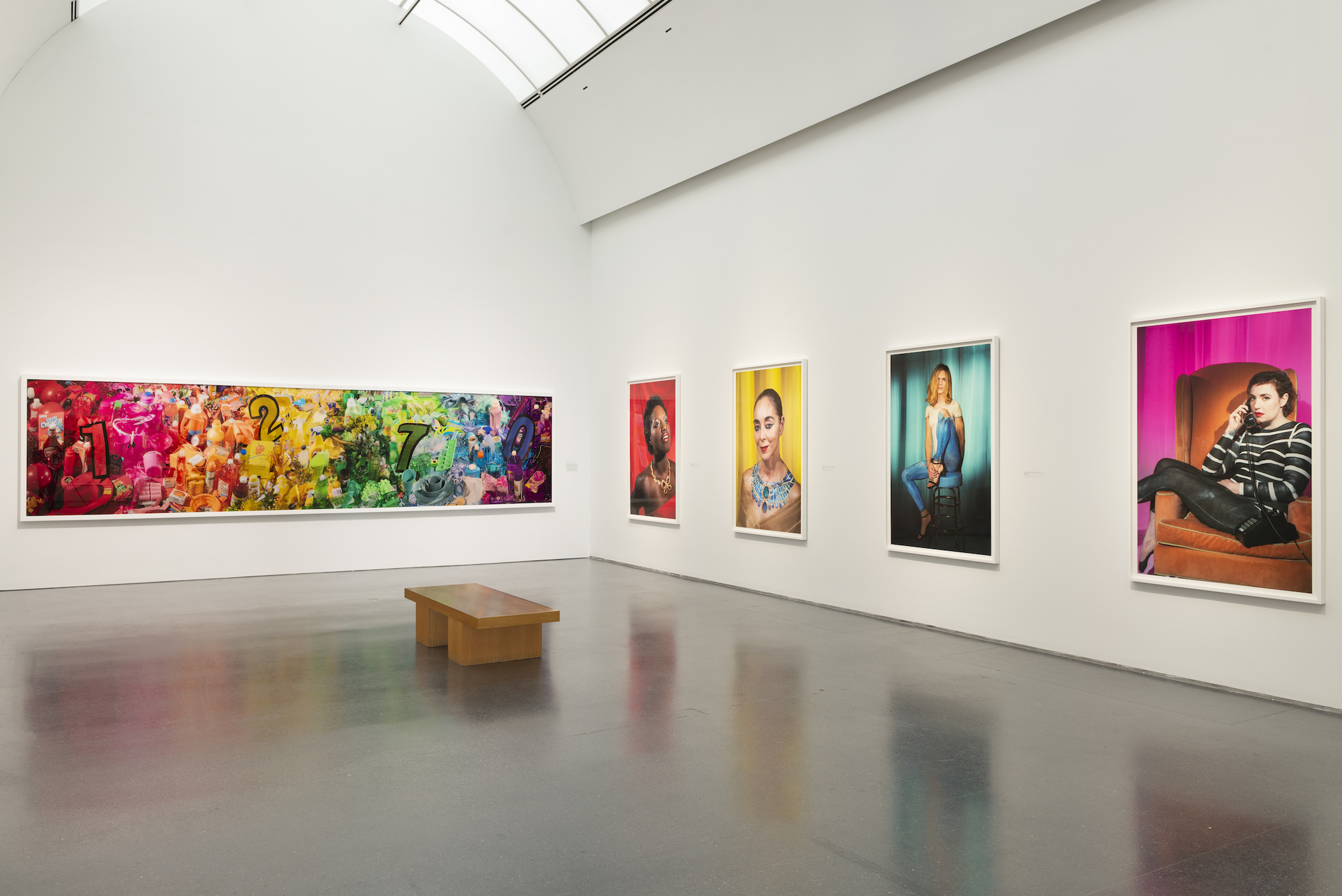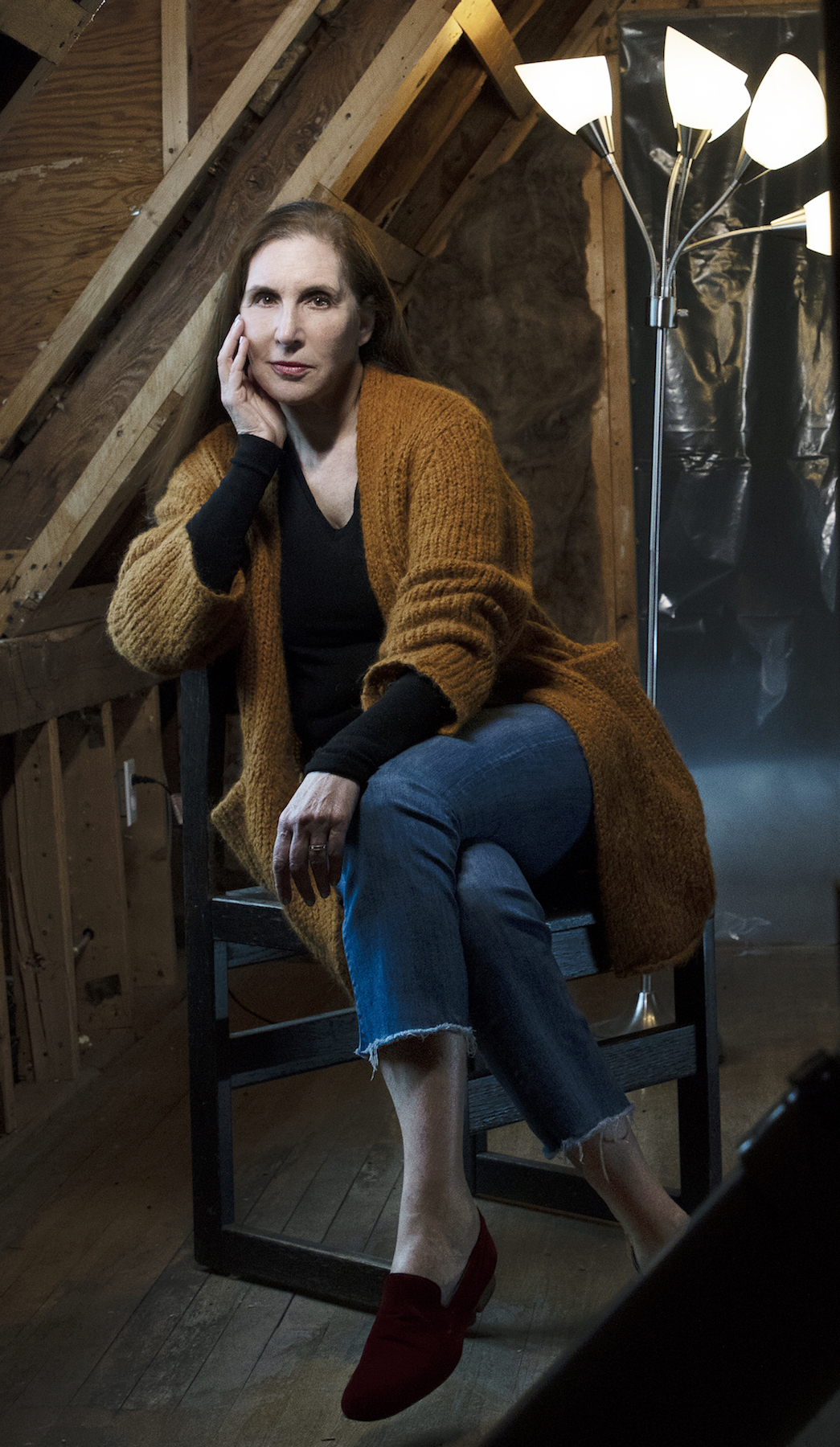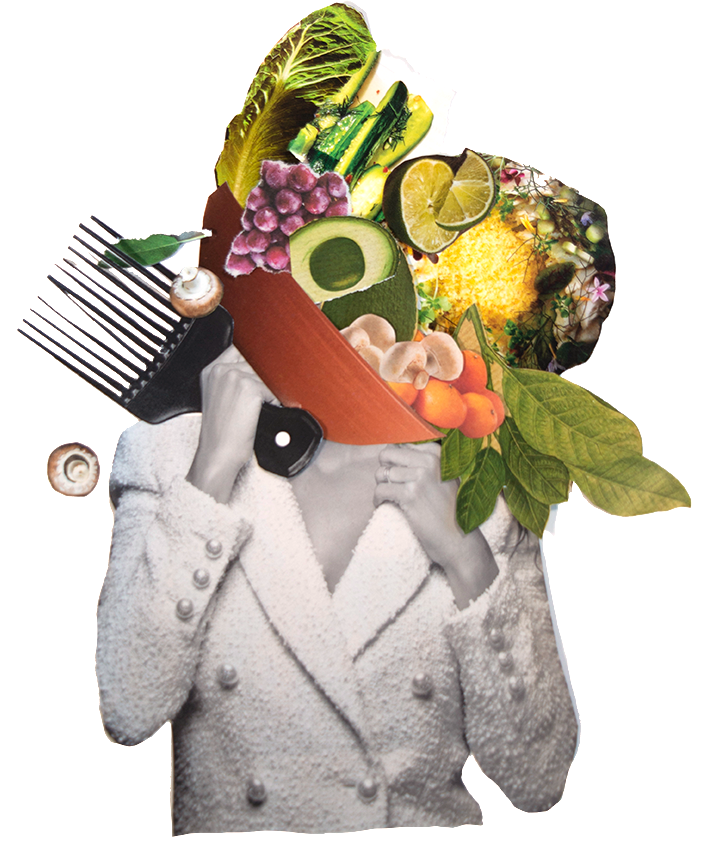
Laurie Simmons strolled through the Griffin Galleries of Contemporary Art at the Museum of Contemporary Art Chicago (MCA) in a fitted gingham pants suit, a neon green t-shirt, and crisp white sneakers. Following senior curator Naomi Beckwith and chiming in to offer ancillary anecdotes about the work in “Big Camera/ Little Camera,” her candor and casual demeanor makes it easy to forget her influence and reach. The first major retrospective of the artist’s work spans four decades and consists of photography, sculpture, and two videos that interrogate, amongst other themes, prescriptive gender roles, domesticity, and the American Dream. The show, which originated at The Modern Art Museum of Fort Worth and was curated by Andrea Karnes, is a polished, comprehensive, if prudent, survey of Simmons’ monumental career.
It feels matricidal to criticize Simmons — her influence on contemporary photographic practice can simply not be overstated — yet never before has her work of the last twenty years seemed so out of touch, so dated, than in the context of her prolific career. The retrospective purports to show an arc in Simmons’ career as both an artist and a feminist, from quiet and critical to blaring and trenchant. Yet neither the intimate, ethereal nature of “Cherry Wallpaper”(snapshots of friends and collaborators in Simmons Lower East Side bedroom) nor the stylish grittiness that made the artist’s flagship work a staple of the New York City art scene has much of a presence in Simmons’ later work, which may as well be a love letter to Generation X.

The photographs from the series “Walking Objects” (1987-1991), which depicts inanimate household items perched on dolls’ legs, are as salient in their power to articulate the contradictions of women’s sexuality and desires now, in the groundswell of neoliberalism, where women’s self-actualization functions as a commodity in the free market, as they were at the series’ birth in the Reagan Era. The choice to debut the presence of color-coordinated glass boxes of an assortment of miniature props and set pieces featured in Simmons’ work, which she historically does not disclose to the public, throughout the gallery space made her impressive technical skills and manipulation of scale in her work irradiate. As sculptural pieces, however, the pedestals fell flat; their rainbow color gradient, which they share with the exhibition’s anticlimactic grande finale “The Mess” (2017), felt incongruous with the gravitas and poignancy of “Color Coordinated Interiors” (1982). Possibly a reference to the 2010 pseudo-biographical film “Tiny Furniture,” the presence of the boxes nod, as much of the exhibition does, to the artist’s desire to engage with the very-online careers of her children Lena Dunham (age 32) and Cyrus Grace Dunham (age 27) in her artwork.
The artist’s millennial series preceding “How We See” reads like a highly publicized detour in an otherwise tasteful career. The role of dolls, dummies, and figurines as a stand-in for broader issues of domesticity and power become more confused, beginning with the decidedly boomer “Color Pictures” (2007-2009) collages. This culminates in the tone deaf “Kigurami” series, which features photographs of women wearing Russian cosplay masks modeled after dolls with anime eyes suggestively posing in a snowy field or an abandoned house in Connecticut. The exhibition ends with relatively new work in large format color with recognizable models (such as the artist’s children) painted with expressive eyes on top of their eyelids and clothes painted on their naked bodies. The series almost says something about the failure to actualize one’s own potential or see or interpret the world clearly and presently, but doesn’t quite get there.
In the final gallery, the portraits crescendo to a twenty-foot wide color photograph of thousands of neon dollar store groceries aligned in a rainbow gradient, propping up the numbers 1-2-7-0. What’s disappointing about this dull, didactic work “confronting” climate change is not that it is a complete 180 for the artist’s oeuvre, but that it is the safe, judicious work of a comfortably successful artist. It misses the considerable opportunity to speak to the serpentine experiences of being a woman who wastes, who has access to endless choices and products with which to actualize a feminine identity — but no collective, socialized vision to adhere to.
Simmons’ late work is a clear turning point in her career, but turning towards what exactly? What is the utility of a retrospective exhibition at this juncture in an artist’s career, which are overwhelmingly about the artist’s identity and visibility in the contemporary art cannon rather than the art itself? If the possibility exists for a retrospective of a living artist to function as a catalyst towards a new self-reflexive chapter in their career, rather than as a death knell of relevance, this one does not make a convincing case for it. What “Big Camera/Little Camera” achieves most saliently, it does by situating Simmons’ now classic works of photography in conversation with the present day, for better or for worse.







